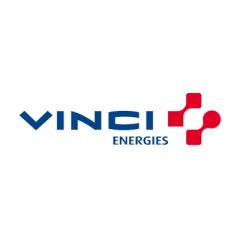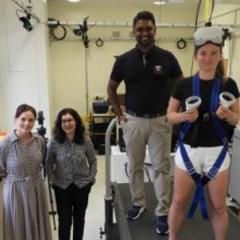A new portable, non-invasive brain scanner is set to speed-up the diagnosis of brain injuries and stroke types by creating an immediate 3D image of the brain.
The device is expected to save lives and minimise brain damage and associated rehabilitation costs.
It has potential for use in emergency departments, ambulances and remote locations around the world, and could have the same life-saving potential as the widespread introduction of defibrillators did 20 years ago.
The scanner was developed by UQ Professors Amin Abbosh and Stuart Crozier and researchers from UQ’s Faculty of Engineering, Architecture and Information Technology, and EMvision Medical Devices Pty Ltd, with technology licensed to EMvision by UniQuest, UQ’s commercialisation company.
EMvision CEO John Keep, a former CEO of Queensland Diagnostic Imaging, said the device had the potential to disrupt the market as it was portable, low-cost and non-ionising, which meant it was safe for repeated use.
“It’s powered by an innovative algorithm that maps the brain tissue using safe, low-power microwaves to produce 3D images in minutes,” he said.
“In the case of stroke, the 3D image would enable medical professionals to quickly identify if damage is a haemorrhage or clot and to treat the patient accordingly, saving precious time.
“Stroke kills more people each year than AIDS, tuberculosis and malaria combined.
“The difference between permanent disability or death and a positive recovery is timely diagnosis and treatment.
“Every hour appropriate treatment is delayed, the brain ages by about 3.6 years.”
EMvision is developing and commercialising the technology and refining its prototype to ensure it meets safety and efficacy requirements and integrates seamlessly into clinical pathways.
Mr Keep said the scanner – the result of a decade of research and development – had the potential to be one of Australia’s most successful university commercialisation stories.
UniQuest CEO Dr Dean Moss said stroke cost Australia about $5 billion annually and early intervention improved survival rates and treatment outcomes.
“The portability, cost-effectiveness and safety of this device is a very attractive proposition for the healthcare industry, with potential for use in both hospitals and ambulances throughout the world,” he said.
“It is also ideal for use in rural and remote areas. In Australia, rural and remote stroke patients are 20 per cent more likely to die than their metropolitan counterparts due to delayed diagnosis.
“This device could well have the same life-saving potential as the widespread introduction of defibrillators here 20 years ago.”
EMvision is building its clinical device in partnership with UQ and Tiller Design and will be running a pilot clinical trial at the Princess Alexandra Hospital in 2018.
EMVision was recently awarded a $2.6 million CRC-P grant from the Australian Government to work with UQ, GE Healthcare and The Princess Alexandra Hospital to advance its brain scanner program.
Media: UniQuest, Danielle Koopman, d.koopman@uniquest.com.au, +61 409 767 199.



